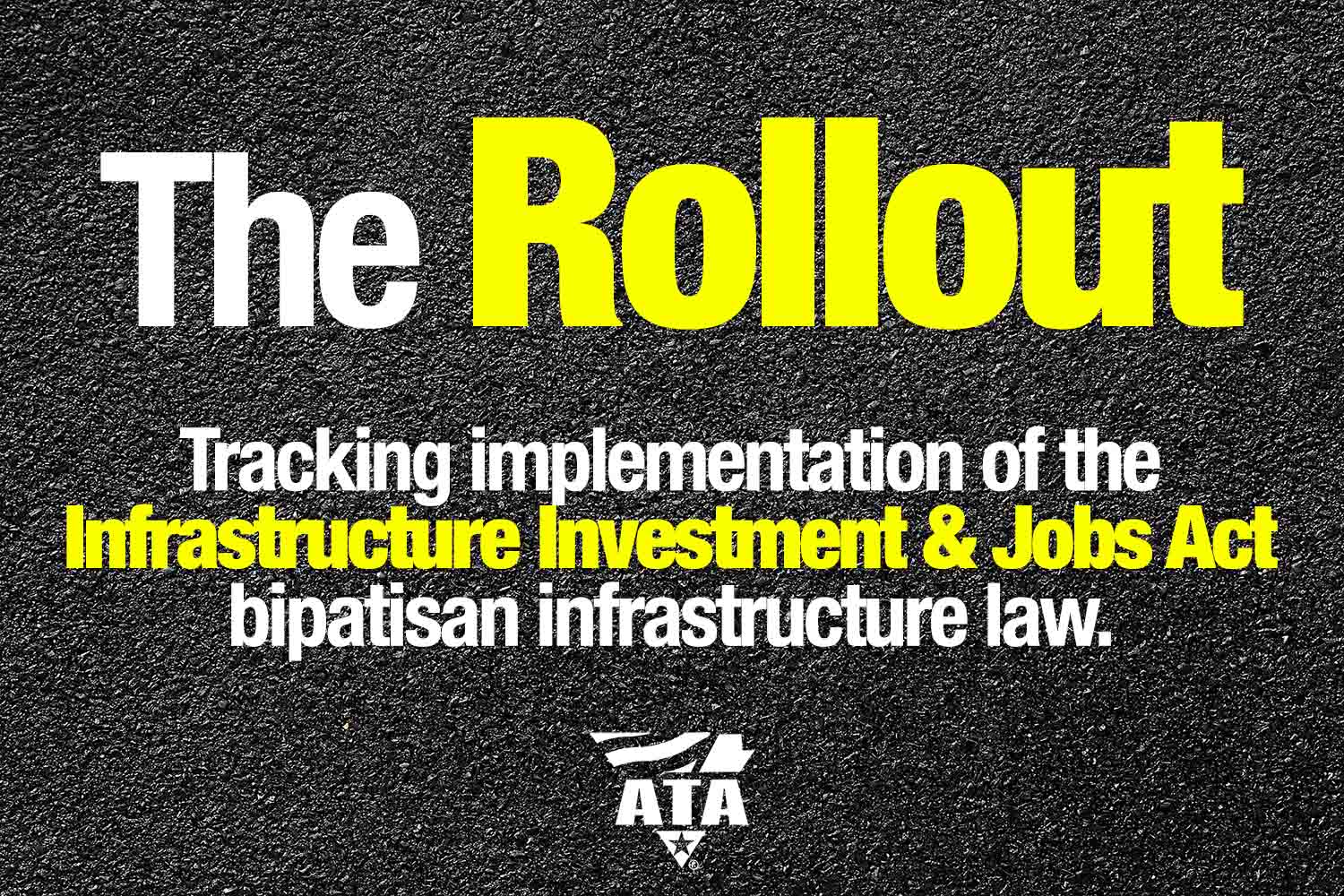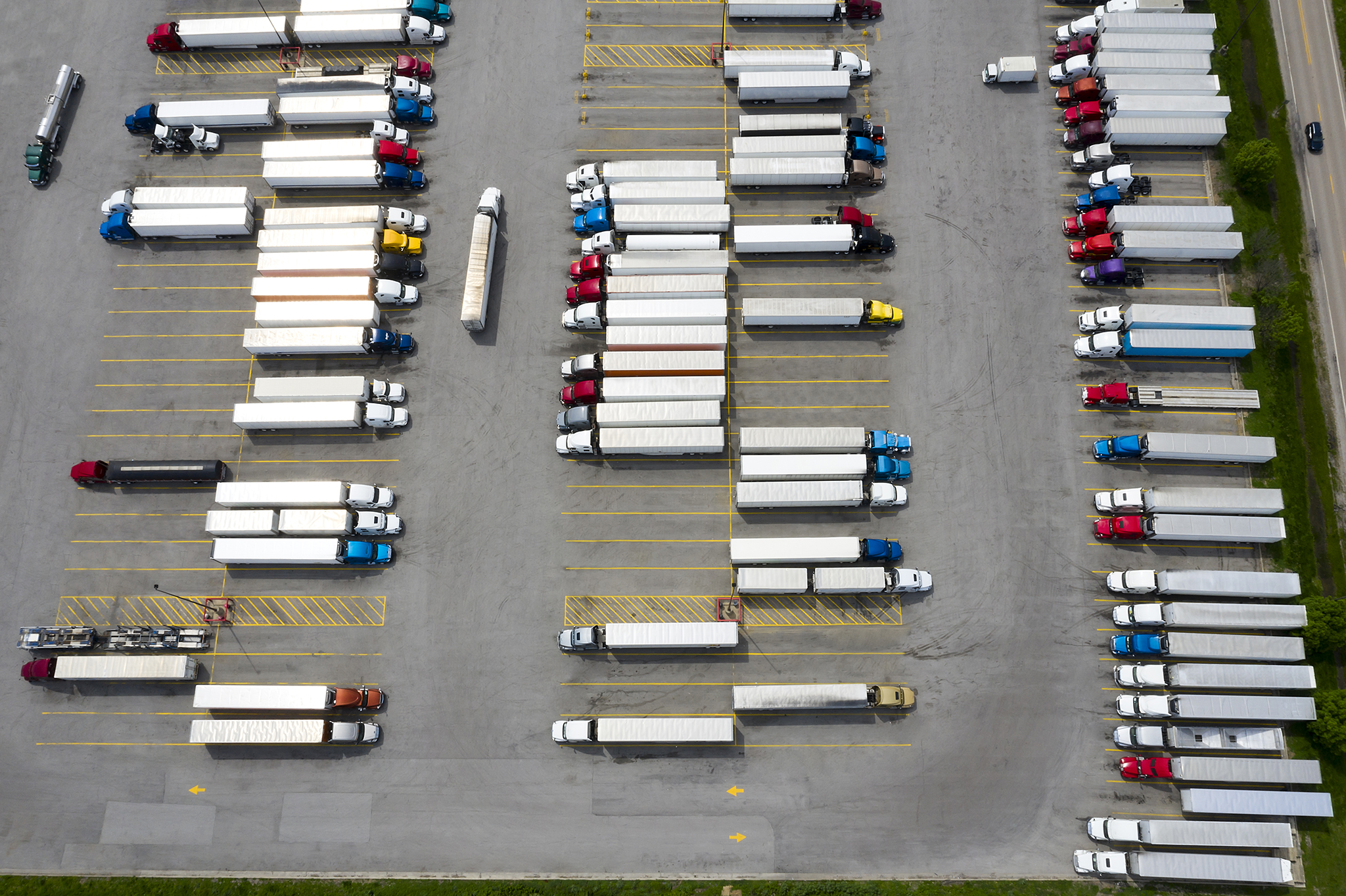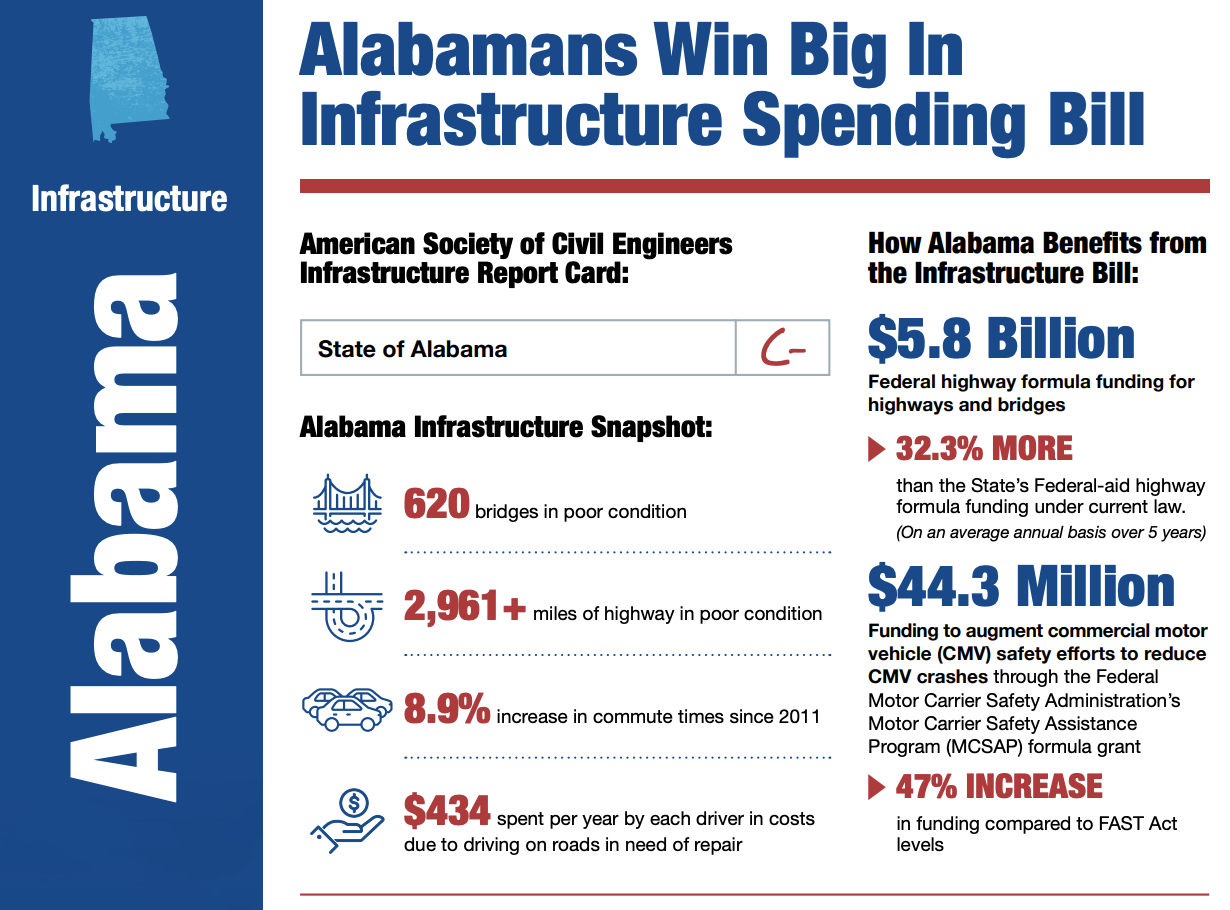
With good planning, trucking can capitalize on the Bipartisan Infrastructure Law.
The Infrastructure Investment and Jobs Act (IIJA), signed into law on November 15, 2021, represents the single greatest investment in American highways and bridges in U.S. history. Commonly known as the Bipartisan Infrastructure Law, IIJA authorizes $477 billion in new funding over five years for surface transportation programs, including $351 billion for highways — a 38% boost above the baseline levels set in the last highway reauthorization bill, the FAST Act. Of that pot, $40 billion is dedicated for bridges — the largest infusion of federal funding into our nation's bridge network since the formation of the Interstate Highway System.
As an industry whose entire business model centers on interstate commerce and the safe and efficient movement of freight by road, trucking stands to benefit from these infrastructure investments through measurable cost and time savings. In order to capitalize on this opportunity, it now falls on state governments, state trucking associations, and other transportation stakeholders to apply for eligible grant programs and ensure federal funds are directed to priority projects that will yield maximum value for motor carriers and the motoring public.
Fighting to Preserve IIJA’s Intent
In December 2021, FHWA issued a memo outlining the agency’s priorities for states’ use of IIJA funds.
The memo amounted to a wish list that was being used to pressure states to spend IIJA funds on highway maintenance and non-highway projects rather than expanding highway capacity. The ATA strongly opposed this guidance, which ran counter to IIJA’s purpose.
While testifying before the House Transportation and Infrastructure Committee, ATA President and CEO Chris Spear explained that the effect of the memo was the country would have “really nice roads and bridges, but we're still sitting on them going nowhere. We need truck lanes. We need parking. We need new bridges. We need more capacity to move the freight.”
Thanks to congressional leadership – notably House Transportation and Infrastructure Chairman Sam Graves and Senate Environment and Public Works Ranking Member Senator Shelley Moore Capito – FHWA recognized their mistake and changed course in February 2023. The ATA issued a statement praising the publication of the new memo.
Freight Planning
State freight plans are blueprints for how government officials design, manage and maintain freight networks. These formalized planning documents describe stakeholders, commodities, trip metrics, and geographic operations that utilize a particular freight transportation network.
Under IIJA, states are now required to update their official freight plans every four years. Freight plans are also now required to include:
- Info on supply chain cargo flows;
- An inventory of commercial ports;
- Findings and recommendations from any multi-state freight compacts;
- Impacts of e-commerce on freight infrastructure;
- Consideration of military freight; and
- Assessment of truck parking facilities in the state.
Establishing a solid freight plan is crucial for states looking to maximize their receipt of federal grant funding under IIJA. We encourage state trucking associations and motor carriers to work with state transportation officials to ensure their freight plans accurately capture the trucking industry’s needs. The American Transportation Research Institute offers guidance and resources on writing freight plans, which is available here.
States’ current freight plans are available here.
Truck Parking
IIJA requires state plans to identify both the locations where trucking parking shortages exist and the cause of the shortage at each location. Although the law does not specifically earmark money for truck parking, such projects are eligible for funding under the federal-aid highway program formula, in addition to a handful of discretionary grant programs. Therefore, it is essential that state freight plans provide a clear picture of the state’s truck parking needs.

PROTECT Formula Program
The Promoting Resilient Operations for Transformative, Efficient, and Cost-Saving Transportation (PROTECT) Formula Program is a new program created under IIJA that will provide states with $7.3 billion over five years to strengthen infrastructure.
The funding can be used for projects that help make surface transportation more resilient to natural hazards, including climate change, sea level rise, flooding, extreme weather events, and other natural disasters through support of planning activities, resilience improvements, community resilience and evacuation routes, and at-risk coastal infrastructure.
PROTECT Formula Program Fact Sheet
Competitive Grant Programs
Beyond federal-aid highway funding apportioned to each state by formula, IIJA offers enormous funding opportunities through competitive grant programs that require applications on a per project basis.
Descriptions of these grant programs are below. Visit the U.S. Department of Transportation's grant resources page for more details, including on how to apply.
Bridge Grant Investment Program
The new Bridge Investment Program, provides $12.5 billion over five years for the repair, rehabilitation, or replacement of bridges in poor condition or at risk of falling into poor condition.
Mega, INFRA, & Rural
USDOT combined three programs into a single funding opportunity. They are:
- The Mega Grant Program, which supports large, complex projects that are difficult to fund by other means and likely to generate national or regional economic, mobility, or safety benefits.
- The INFRA Grants Program, which awards competitive grants for multimodal freight and highway projects of national or regional significance to improve the safety, efficiency, and reliability of the movement of freight and people in and across rural and urban areas.
- The Rural Surface Transportation Grant, which supports projects to improve and expand the surface transportation infrastructure in rural areas to increase connectivity, improve the safety and reliability of the movement of people and freight, generate regional economic growth, and improve quality of life.
Since the projects eligible for these three programs share many common characteristics—such as a larger project size, multimodal eligibility, and similar statutory requirements—USDOT created a streamlined process to allow a single application to be used to apply for all three programs.
RAISE
The Rebuilding American Infrastructure with Sustainability and Equity (RAISE) discretionary grant program helps communities around the country carry out projects with significant local or regional impact. This popular program allows project sponsors to obtain funding for projects that are harder to support through other U.S. DOT grant programs. RAISE grants can be used for a wide variety of multimodal projects.
Ports
The Port Infrastructure Development Program (PIDP) is a discretionary grant program administered by the U.S. Maritime Administration. Funds are awarded on a competitive basis to projects that improve the safety, efficiency, or reliability of the movement of goods into, out of, around, or within a port.
Electric Vehicle Infrastructure
The National Electric Vehicle Infrastructure (NEVI) Formula Grant Program provides funding for states to strategically deploy electric vehicle (EV) charging infrastructure and to establish an interconnected network to facilitate data collection, access, and reliability. Under this program, each state is required to submit an EV Infrastructure Deployment Plan that describes how the state intends to use its apportioned NEVI funds.
States’ current deployment plans are available here.
